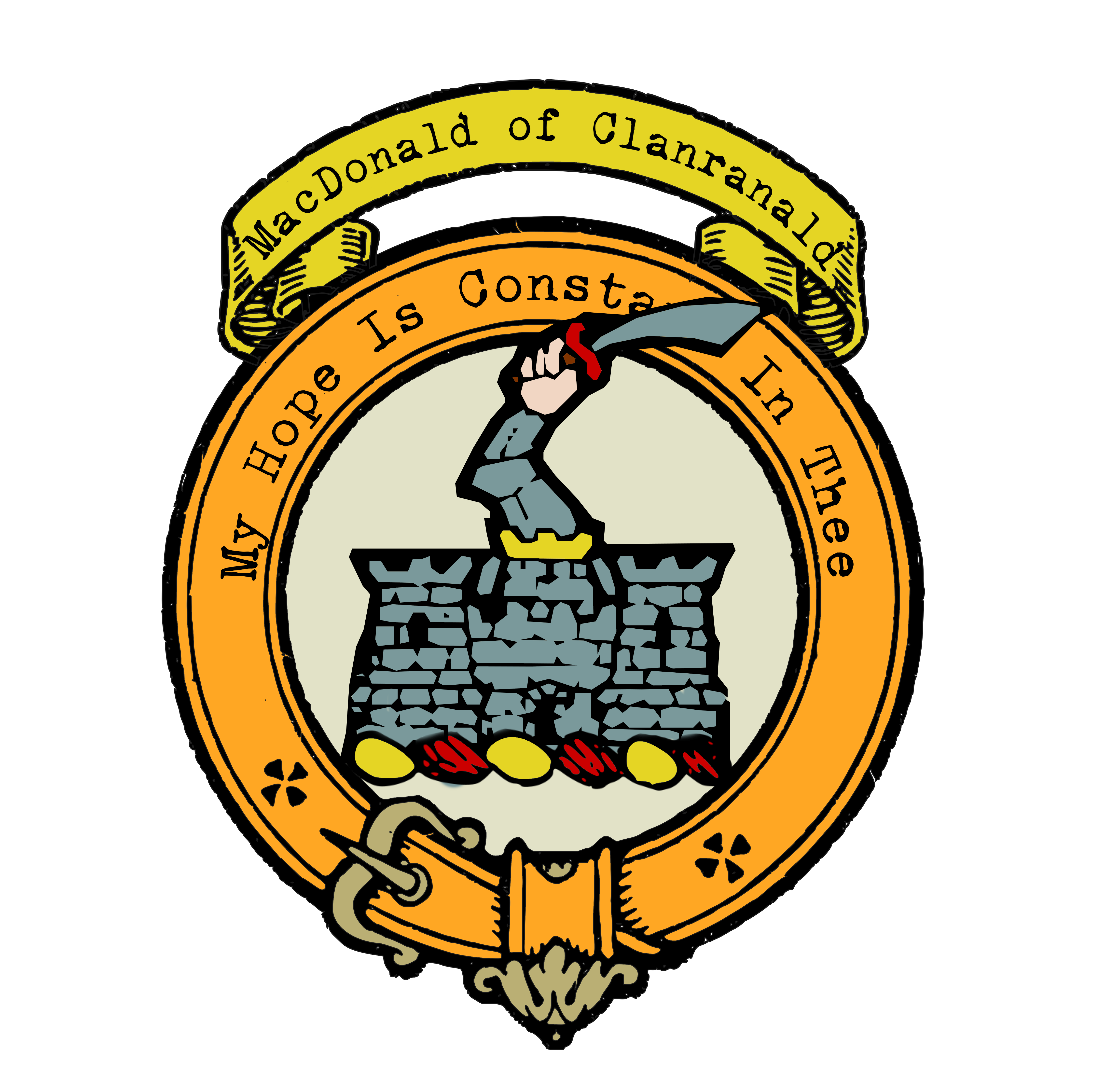MacDonald of Clanranald Crest
|
|
CREST: A castle Argent masoned Sable, and issuing from the center tower a Dexter arm in amour embowed grasping a sword all Proper. MOTTO: My hope is constant in thee TRANSLATION: N/A VARIATIONS: N/A |
| The Scottish Clan MacDonald of Clanranald is one of the most significant clans in Scotland’s history. With roots tracing back to the 14th century, Clanranald is a branch of the larger Clan Donald, a powerful and influential clan that dominated the western highlands and islands of Scotland. Over the centuries, Clanranald played a pivotal role in shaping Scotland’s history, and their legacy continues to be felt to this day. | |
 |
|
| Purchase @ Redbubble Purchase @ Amazon.com Purchase @ Amazon.co.uk |
|
| The origins of Clan MacDonald of Clanranald can be traced back to Ranald, son of John of Islay, Lord of the Isles, and Amy Macruari, heiress to the Lordship of Garmoran. Despite being the second-eldest son, Ranald was passed over as high chief in favor of his younger half-brother, Donald, whose mother was a daughter of Robert II and a Stewart princess. However, Ranald received a charter from his father, confirmed by Robert II in 1373, of the greater part of the Macruari inheritance, including Moydar, Arisaig, and Lochaber.
Over the centuries, Clanranald grew in power and influence, with several chiefs making significant contributions to Scotland’s history. Alan Macranald, the eldest son of Ranald, succeeded as the chief of Clanranald, and his son Roderick was a staunch supporter of the Lord of the Isles. Alan led a raid into Lochaber and Badenoch in 1491, which culminated in the capture of Inverness Castle. Clanranald also supported Charles I and played a significant role in Montrose’s victory at Inverlochy in 1645. Perhaps the most famous chief of Clan MacDonald of Clanranald was Alan, the 14th chief, who led his clan to join Viscount Dundee to fight for James VII in 1689. When the Stuart royal standard was unfurled on the braes of Mar on 6 September 1715, Alan was the first to rally to the Jacobite cause. His grateful monarch created him Lord Clanranald. He was killed at the head of his clan at the Battle of Sheriffmuir in November 1715. After Culloden, the Clan was disbanded, and many members were forced into exile. However, in the 20th century, the Clan saw a revival, with Ranald Alexander Macdonald, the present chief, being recognized by the Lord Lyon in 1956. Today, the Clan continues to be an important part of Scotland’s cultural heritage, with members all over the world. In conclusion, the history of Clan MacDonald of Clanranald is a testament to the power, influence, and resilience of Scotland’s clans. Their legacy has left an indelible mark on Scotland’s history, and their contribution to the country’s culture and heritage is immeasurable. As the Clan continues to evolve and adapt to the modern world, its rich and fascinating history will continue to inspire and fascinate people for generations to come. |
|

